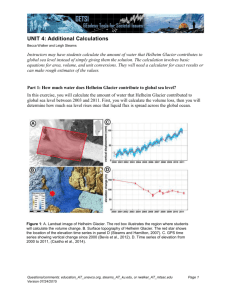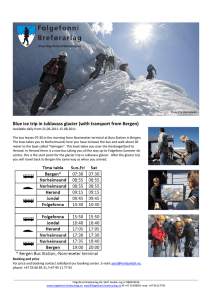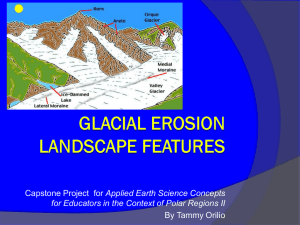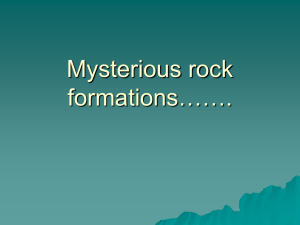Unit 4: animation questions
advertisement
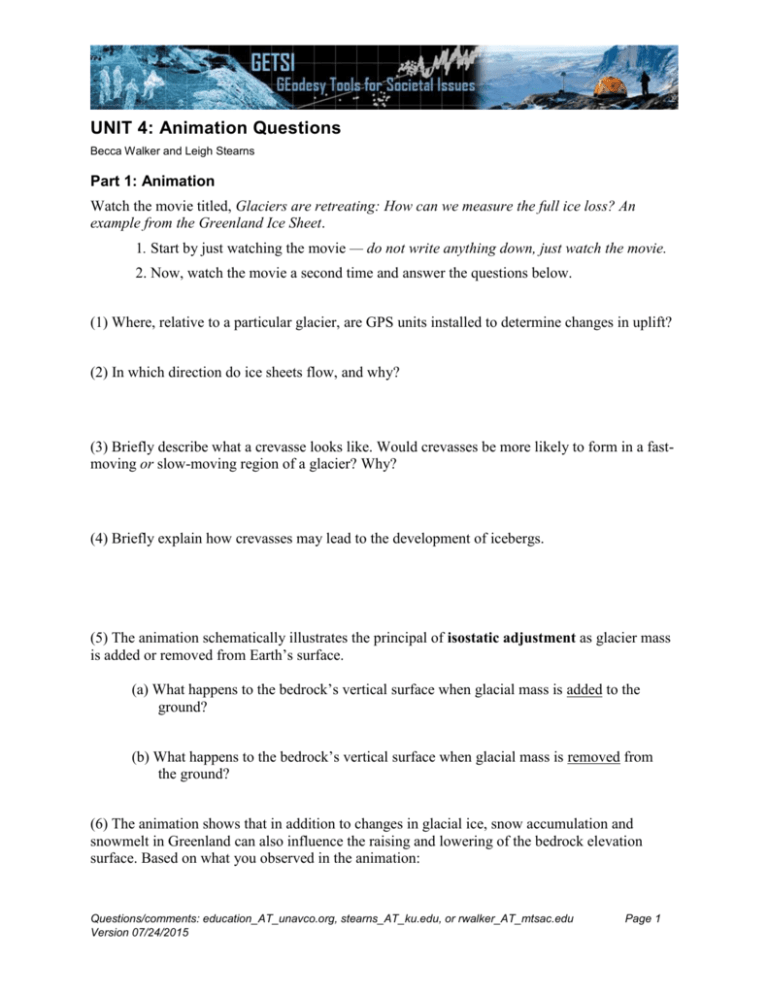
UNIT 4: Animation Questions Becca Walker and Leigh Stearns Part 1: Animation Watch the movie titled, Glaciers are retreating: How can we measure the full ice loss? An example from the Greenland Ice Sheet. 1. Start by just watching the movie — do not write anything down, just watch the movie. 2. Now, watch the movie a second time and answer the questions below. (1) Where, relative to a particular glacier, are GPS units installed to determine changes in uplift? (2) In which direction do ice sheets flow, and why? (3) Briefly describe what a crevasse looks like. Would crevasses be more likely to form in a fastmoving or slow-moving region of a glacier? Why? (4) Briefly explain how crevasses may lead to the development of icebergs. (5) The animation schematically illustrates the principal of isostatic adjustment as glacier mass is added or removed from Earth’s surface. (a) What happens to the bedrock’s vertical surface when glacial mass is added to the ground? (b) What happens to the bedrock’s vertical surface when glacial mass is removed from the ground? (6) The animation shows that in addition to changes in glacial ice, snow accumulation and snowmelt in Greenland can also influence the raising and lowering of the bedrock elevation surface. Based on what you observed in the animation: Questions/comments: education_AT_unavco.org, stearns_AT_ku.edu, or rwalker_AT_mtsac.edu Version 07/24/2015 Page 1 Unit 4: Animation questions (a) Describe how the vertical movement of a GPS receiver changes during winter. (b) Describe how the vertical movement of a GPS receiver changes during summer. (7) Which of the following statements about isostatic adjustment and snow accumulation is true? (a) The amount of snow that accumulates during a particular period of time is about the same as the amount of crustal deformation that occurs over the time period. (b) The amount of snow that accumulates during a particular period of time is much greater than the amount of crustal deformation that occurs over the time period. (c) The amount of snow that accumulates during a particular period of time is much less than the amount of crustal deformation that occurs over the time period. (8) Referring to the graph at the upper right-hand corner of the animation screen, what is shown on the X-axis? What is shown on the Y-axis? (9) According to the animation, what happened from 2004–2011 to: (a) Helheim Glacier’s thickness? (b) Helheim Glacier’s speed? (c) the elevation of the bedrock surface in proximity to Helheim Glacier? (d) the amount of ice from Helheim Glacier being discharged into the ocean? (10) Is the phenomenon illustrated in this animation unique to Helheim Glacier? Briefly explain your answer. Questions/comments: education_AT_unavco.org, stearns_AT_ku.edu, or rwalker_AT_mtsac.edu Version 07/24/2015 Page 2
